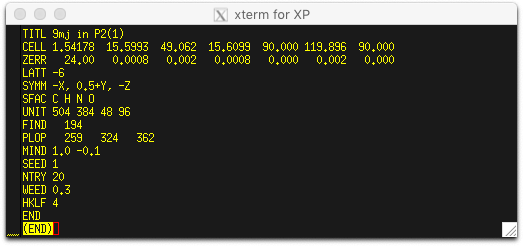
SHELXD easily solves the structure ...
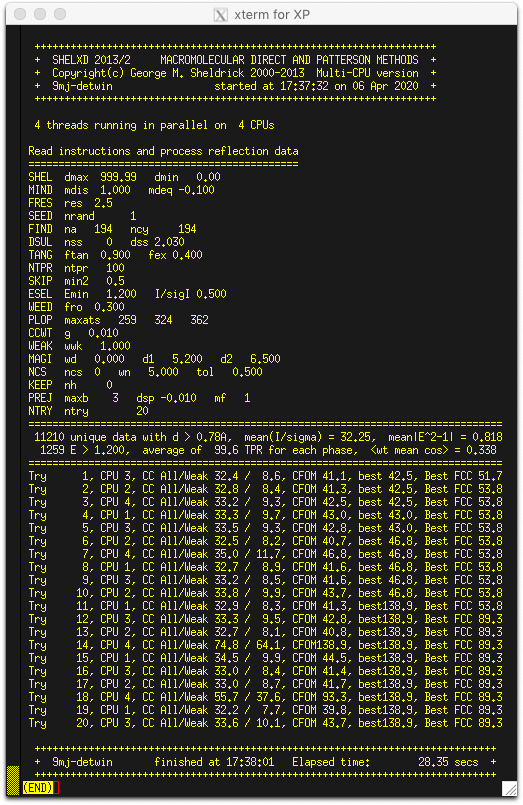
... and finds all of the non-hydrogen atoms. The only drawback is SHELXD assigned
atoms exclusively as carbon, which is apparent if we view it in Mercury:
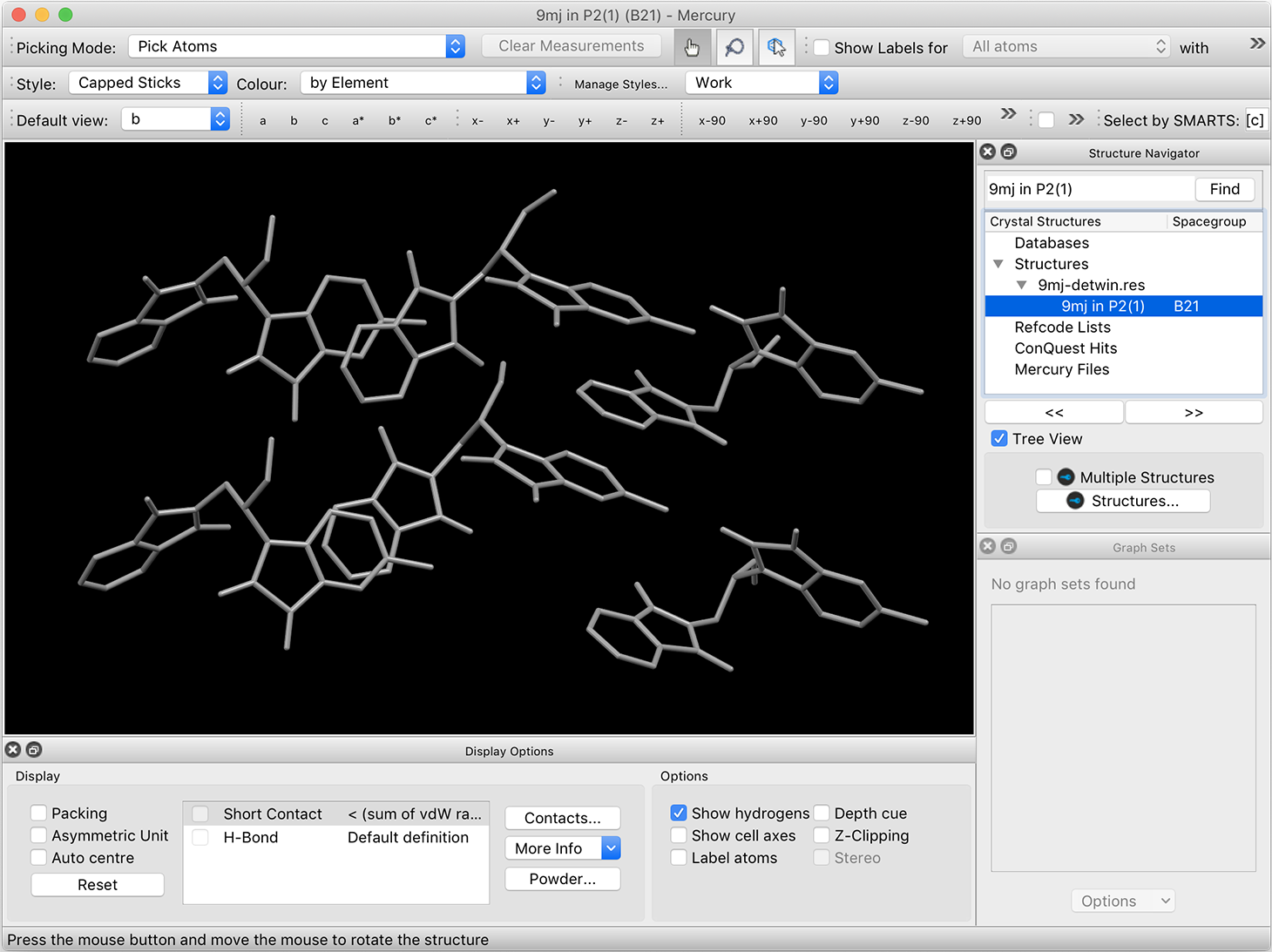
That is easily fixed, e.g., using ShelXle:
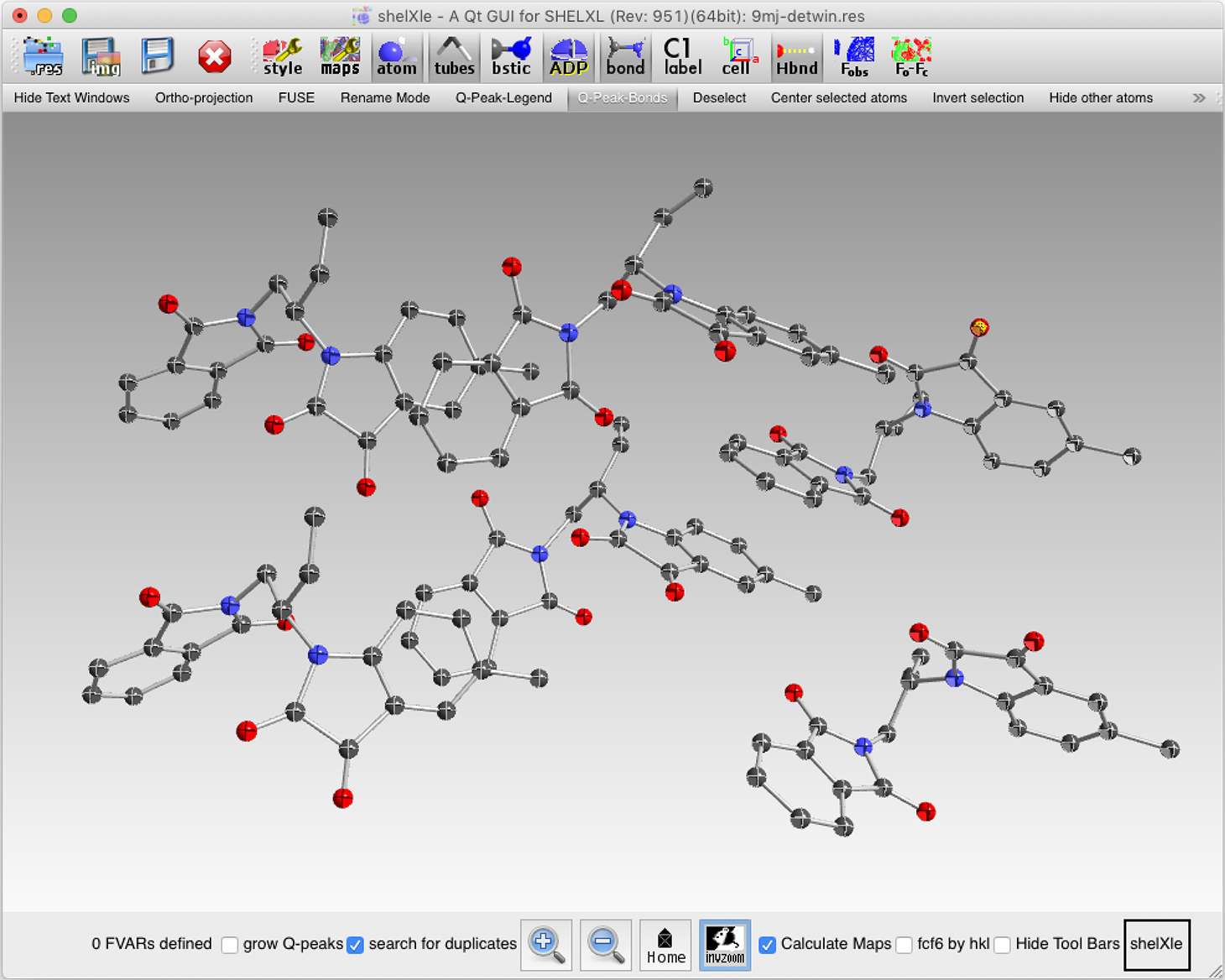
To refine as a three-component twin, the TWIN matrix used for the original P21
model will work. Just remember to specify three components, a BASF with two fractions, and include
'LATT -6' to ensure a B-centered cell. The model refines smoothly, with no need for
constraints or restraints, even when fully anisotropic. Here's a look at the complete asymmetric
unit:
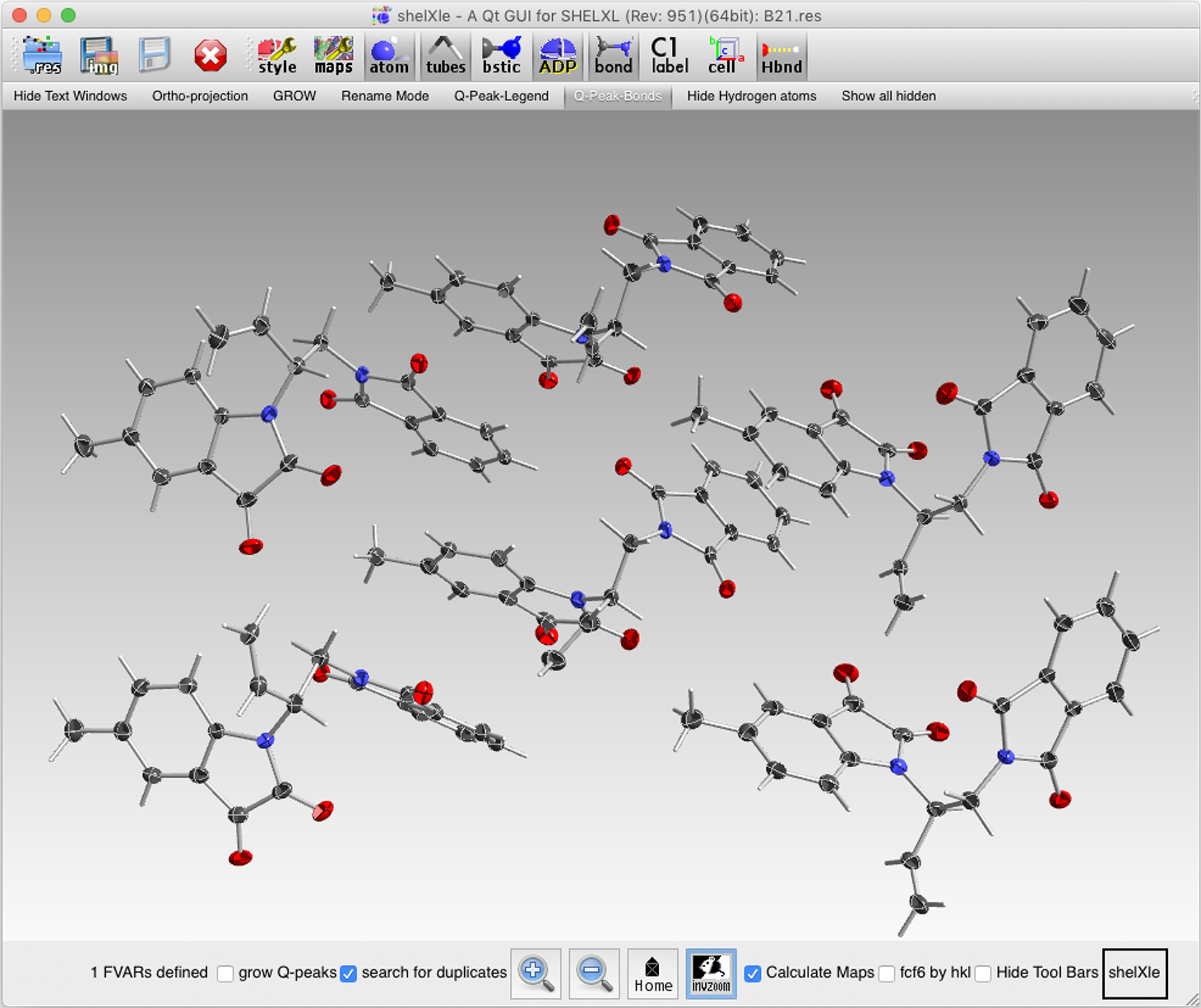
It still needs a sensible numbering scheme and since Z' = 6, it's best to number them all
the same way and make each a separate 'RESI'. That's easy enough to do, but not necessary for this
tutorial. For all intents and purposes, the problem is solved.
An entertaining postscript for 9mj is that B21 caused the validation routines in Platon and checkCIF to throw a massive wobbler. Those issues were quickly patched (thanks to Ton Spek). CheckCIF still returns an 'A-level' squawk about space group type B21, but it is trivial to justify.
An entertaining postscript for 9mj is that B21 caused the validation routines in Platon and checkCIF to throw a massive wobbler. Those issues were quickly patched (thanks to Ton Spek). CheckCIF still returns an 'A-level' squawk about space group type B21, but it is trivial to justify.
1: Introduction
2: Set up instructions using XPREP
3: Solve using P21 with SHELXD
4: Detwin using SHELXL
5: Analyze detwinned dataset using XPREP
6: Three-fold twinning in graphic detail
7: Solve using B21 with SHELXD
2: Set up instructions using XPREP
3: Solve using P21 with SHELXD
4: Detwin using SHELXL
5: Analyze detwinned dataset using XPREP
6: Three-fold twinning in graphic detail
7: Solve using B21 with SHELXD